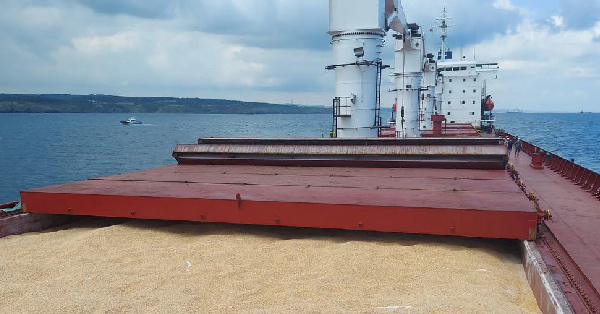With the contested extension deadline for the Black Sea Grains Initiative approaching fast, and with little guidance as to what might follow after May 18, Ukraine grain export volumes are exhibiting a steady decline while an increasingly dysfunctional Russian wheat market is seen adding to participants’ concerns.
“Large trading houses are being driven away from Russia, which doesn’t bode well for the Black Sea trade,” said a Geneva-based trader. “Russia appears determined to control all regional agricultural trade in the region and integrate vertically.”
The UN-brokered Black Sea Grain Initiative, signed July 2022 by Russia, Ukraine and Turkey, and renewed for a second time in March for at least two months, enabled the resumption of exports of grains from the three key Ukrainian ports of Chornomorsk, Odesa and Yuzhny/Pivdennyi on the Black Sea, with cumulative grain shipments under the safe passage deal reaching almost 29 million mt as of April 24, data from the Initiative’s Joint Coordination Centre showed.
Market participants have been pointing to daily Handysize rates in the $13,000-14,000/d range for trips to the Mediterranean via the Black Sea, with vessel delivery in Canakkale, with a Supramax vessel potentially claiming day rates in the $15,000-16,000/d range.
So far in April, Ukrainian seaborne grain flows via the Black Sea have been averaging slightly below 102,000 mt/d during the period April 1-23, to tread some 20% below the average daily levels observed for the full month of March.
Overall, corn continues to dominate exports, according to JCC data, claiming almost 58% of the observed volumes, with wheat accounting for slightly over 25% of the exports, and the rest consisting of sunflower products, barley and soya beans.
In terms of destinations, Europe and Central Asia regions cling to the top spot on the basis of proximity, claiming almost 44% of the flows so far in April, with East Asia and Pacific receiving almost 35% of the volumes. The remaining cargoes are destined for Middle East and North Africa, which is claiming almost 15% of the Ukrainian seaborne supply in April, and South Asia, data from the JCC showed.
As for shipment sizes, data from the JCC point to an average size of just over 44,000 mt so far in April, only slightly lower on the month, with March’s average shipment size levels closer to 45,000 mt.
Still, with the average shipment size at almost 45,000 mt during the period April 17-23, it remains above the August-April historical weekly average size of less than 34,000 mt.
Russian wheat market ‘broken’
The Russian wheat market remained stable throughout the month of April so far, as traders said the market remained “broken” by the introduction of an unofficial price floor. Since the end of March, the most competitive FOB offer for Russian wheat has remained at $275/mt for a Handysize cargo, a price too high to elicit interest from FOB buyers.
“They cannot sell lower,” a trader of Russian wheat said, with another FOB market participant adding “there are no bids.” Sources said sellers of Russian wheat have used the lack of clarity on freight charges from Russia to avoid the price floor by selling on a CIF basis. “They hide [the true FOB value] in the freight,” a fourth trader said.
Some traders are now worried that the price floor may last throughout the marketing year 2023–24. “It feels as though [Russia] wants to artificially keep that [$275/mt] level,” a fifth trader said, looking ahead to the new crop. This adds to the uncertainty about the next marketing year as some multinationals, namely Cargill, LDC and Viterra, have already exited the Russian market for the upcoming season.
Russian wheat prices dropped to $275/mt after falling over $20/mt in March as traders rushed to sell their old crop after a record harvest in 2022 largely due to rainfall.
In Romania, basis offers for the old crop came down in previous weeks, with the lowest offers for 11.5% protein wheat at a premium of Eur1/mt to May MATIF on April 21.
The country is the only EU nation in the central and eastern bloc to have permitted imports of grain and other agricultural products from Ukraine. Poland, Slovakia, Hungary and Bulgaria have imposed restrictions on imports until June 30-July 1, as farmers protested that the influx of Ukraine grain via land transport — the “solidarity lanes” — had pushed down local prices and reduced competitiveness in Central Europe.
The Ukrainian wheat and corn market remained largely quiet as traders reported little offers and bids on the FOB market.
Sellers are hoping for a change in Russia’s position that would give them confidence to sell beyond mid-May. Traders remained concerned after the grain deal inspections were blocked three times over the past weeks due to a lack of agreement, with inspections resuming again April 19.
“There is no real FOB market in the POC ports and it’s not helped by the by disruption [of the grain corridor],” said one market participant. “There is demand [from destinations] but it’s slow,” said another one.
Source: Platts









































